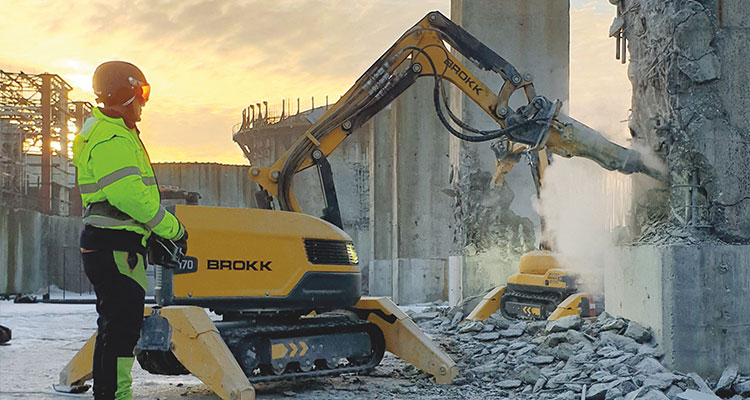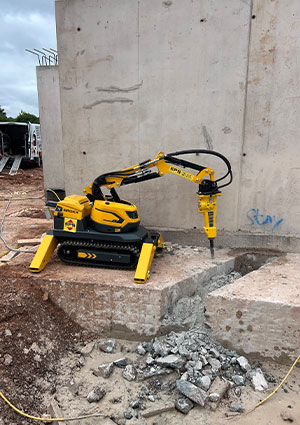The benefits of jobsite mechanization and robotic demolition
Previously, construction and demolition practices relied on full crews using handheld equipment to finish a project. Now, there are dozens of equipment options to choose from. Mechanization, by its nature, benefits workspaces in a variety of productivity and safety-enhancing ways. With so many options, how do contractors, laborers and project managers choose the right mechanized solutions for their project?
Successful contractors think outside the box and supplement experienced crew members with advanced technology like robotic demolition machines to increase efficiency and reduce physical strain on laborers. Additional mechanization options help contractors take advantage of current opportunities while accommodating industry trends.
Productivity
Traditionally, handheld pneumatic breakers and other highly physical methods were the only option on construction and demolition jobsites. However, contractors now have the option to invest in jobsite mechanization, which allows them to revolutionize productivity.
A demolition robot paired with a hydraulic breaker, for example, improves upon previous productivity goals when compared to hand tools. These machines feature impressive hitting power, on par with excavators three times their size, and offer industry-leading power-to-weight ratios. They can access some of the most confined and restrictive jobsites. At 31 inches (79 centimeters) wide and weighing 1,235 pounds (560 kilograms), the most compact units are small enough to fit through standard doorways and light enough to be transported on passenger elevators, making them ideal for confined spaces and interior demolition projects. Larger models are available with higher power ratios for more challenging applications. Some contractors cut their large crews by as much as a third when using demolition robots. Instead of having ten crew members working with hand tools, each robot only requires a single operator. This means contractors can better utilize their remaining employees at other areas on the jobsite, finishing a project faster. This increases productivity and lowers overall labor costs.
 Safety
Safety
Contractors who invest in mechanization also reduce the amount of dangerous and hard manual labor, which is a powerful benefit to both young and experienced workers alike. With an operating distance of up to 984 feet (300 meters), remote-controlled units physically distance employees from harmful silica dust, as well as the strong vibrations of handheld equipment.
Remote-controlled demolition machines help prevent one of the most common causes of serious work-related injury and death in construction — falls. A remote-controlled unit allows operators to remain at a safe distance from ledges and other fall hazards.
For contractors using robots, these safety benefits can quickly add up to significant savings on workman’s comp and insurance premiums. For example, remote operation paired with smaller crew sizes can significantly lower worker liability costs by limiting personnel in confined spaces or hazardous operations.
Recruitment and retention
Implementing cutting-edge technology also offers some powerful recruitment and retention tools. Employees understand quality of life and length of career can be significantly affected by injuries and silica dust exposure. Currently, the median age of a construction worker is 42.3 years. A young employee might see construction as a long-term profession while an experienced worker may see it as more realistic to stay in the industry for the duration of their career.
Another benefit of mechanization is that cutting-edge technology can attract younger workers. Some contractors have seen a significant increase in younger workers once they invested in robotic equipment.
Conclusion
Technological advances like robotic demolition machines can help change the way contractors work and make it possible to thrive in today’s environment. Mechanization allows contractors to quickly adapt to changes in labor, process or regulation while keeping them ahead of the curve – and the competition.
By Jeff Keeling
Jeff Keeling is the vice president of sales and marketing for Brokk Inc. Brokk has been the world’s leading manufacturer of electric remote-controlled demolition machines and attachments for more than 45 years. Through continuous innovation in engineering and design, Brokk can offer unique solutions to multiple industries worldwide, including construction, demolition, mining and tunneling, cement and metal processing, nuclear and other specialty applications.

 Safety
Safety